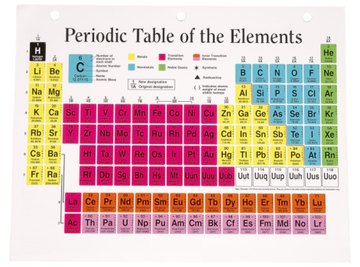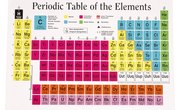
The electrons in an atom's outermost shell, its valence electrons, are most important in determining its chemistry. Nonetheless, if you are writing electron configurations, you'll need to take inner shell electrons into consideration as well. Inner shell electrons are any electrons not in the outermost shell. They shield the valence electrons from the nucleus, reducing the effective nuclear charge.
Quantum Numbers
Electrons can be most accurately described as standing waves. Much as standing waves on a string can only have frequencies that are multiples of the fundamental frequency, or harmonics, the electron "wave" can only have certain energies. In classical physics, you could describe an object by describing its location and its velocity, but in quantum mechanics, you can never know for certain exactly where the electron will be; you can only know where it is likely to be found. Consequently, electrons are described instead using four quantum numbers.
Orbitals
There are four quantum numbers. The first, the principal quantum number (n), indicates the size of the orbital. The angular quantum number (l) indicates the shape of the orbital, while the magnetic quantum number (m) indicates how it is oriented in space. Finally, the fourth quantum number is called the spin and can have either a +1/2 value or a -1/2 value. You need the first three quantum numbers to describe a given orbital, but you need all four to describe an electron, since up to two electrons can occupy a given orbital.
Shells
All orbitals that share the same principal quantum number are said to belong to the same shell, regardless of their values for the other three quantum numbers. Since a maximum of two electrons can occupy any given orbital, and each shell only features a set number of orbitals, each shell has a maximum number of electrons it can accommodate. The outermost occupied shell in an atom is its valence shell. Electrons found in shells with smaller principal quantum numbers are called inner shell electrons.
Significance
All electrons have a negative charge and therefore repel each other. Inner shell electrons repel valence electrons and thereby shield them to some extent from the attraction they experience towards the positively charged nucleus. The pull experienced by a valence electron is sometimes called the effective nuclear charge, as distinct from the actual nuclear charge. That's why elements on the far left of the periodic table are in general more likely to give away electrons, while elements on the far right are in general more likely to take them.
References
- Atoms and Molecules; An Introduction to the Electronic Structure of Atoms and Molecules; Richard F.W. Bader
- Bodner Research Web: Quantum Numbers and Electron Configurations
- "Chemical Principles: The Quest for Insight"; Peter Atkins, et al.; 2008
About the Author
Based in San Diego, John Brennan has been writing about science and the environment since 2006. His articles have appeared in "Plenty," "San Diego Reader," "Santa Barbara Independent" and "East Bay Monthly." Brennan holds a Bachelor of Science in biology from the University of California, San Diego.
Photo Credits
Hemera Technologies/PhotoObjects.net/Getty Images
